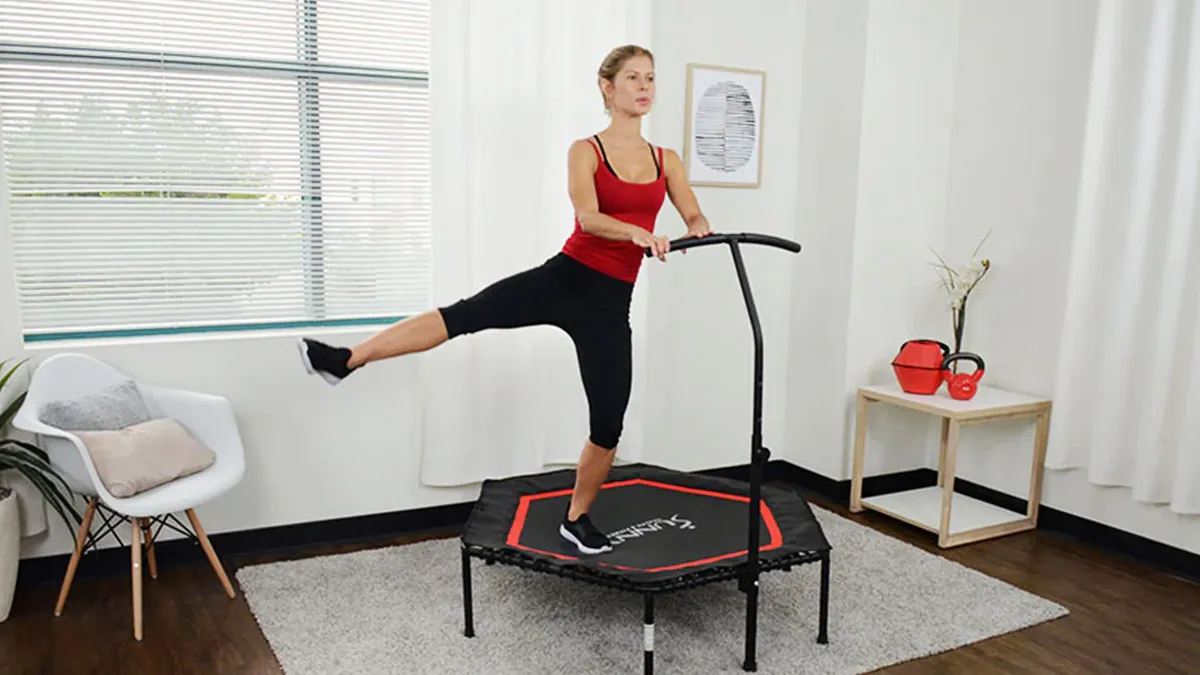
For decades, running has reigned as the measure of cardiovascular fitness, praised for being low-hassle and high-effect. Yet, a new challenger has been gradually bouncing its way into the limelight, which is the trampoline exercise. From mini-trampolines for home workouts to specialised rebounder classes, the popularity of a low-impact, high-entertainment regimen is clear. But the million-dollar question looms if trampoline exercises really are better than running?
Table of Content:-
In an exclusive interaction with the editorial team of Onlymyhealth, Akshit Khatri, Sports Officer, Sharda University - Noida, helped us understand the science, benefits, and drawbacks of each to inform your decision about which route to fitness is best for you. Here is what he shared with us.
The Case for Running
Running has a reputation that it justly deserves. It's an amazing full-body exercise that conditions your cardiovascular system and lungs, increases endurance, and can be accomplished just about anywhere with a good pair of kicks.
Key Benefits of Running
1. Cardiovascular Powerhouse
Running makes your heart work fast and efficiently, contributing to remarkable gains in cardiovascular strength and endurance.
2. Bone Density Boost
The effect of running is a weight-bearing activity that triggers bone development, which can prevent osteoporosis.
3. Accessibility
You essentially need only a pair of running shoes and some open area.
4. Calorie Burn
Running is an effective calorie burner, which is why it is such a weight loss favourite.
5. Mental Health Perks
The ‘runner's high’ is real, due to endorphin release, and running can be a great stress reducer.

Also Read: Is the MIND Diet Favourable for Weight Loss? Nutritionist Shares Insights
Possible Drawbacks of Running
1. High Impact
Repeated joint impact (knees, ankles, hips) causes injuries, particularly for novices or those with pre-existing conditions.
2. Risk of Injury
Shin splints, runner's knee, and stress fractures are frequent grumblings.
3. Weather Dependent
Outdoor running may be restricted by hazardous weather conditions.
Why Are Trampolines Gaining Traction?
Trampoline exercises, also known as ‘rebounding,’ provide a special combination of benefits that counteract some of the disadvantages of running.
Key Benefits of Trampoline Exercises
1. Low Impact, High Intensity
This is the game-changer. The trampoline absorbs much of the impact, significantly reducing stress on your joints while still providing an excellent cardiovascular workout. This makes it ideal for individuals with joint pain, recovering from injuries, or looking for a gentler alternative.
2. Lymphatic System Stimulation
The bouncing up-and-down motion of rebounding is thought to stimulate the lymphatic system, which is an important system for detoxification and immune response.
3. Better Balance and Coordination
Having to stay stable on a trampoline engages core muscle groups and improves proprioception (your body's sense of where it is in space).
4. Full-Body Engagement
Not just your legs, rebounding engages your core, glutes, and even your upper body with some arm movement.
5. Fun Factor
Let's be honest, bouncing is fun! This can increase adherence to your workout routine.
Also Read: Worried About Your Blood Sugar Levels? Here's How Portion Control Will Help
Potential Downsides of Trampoline Workouts
1. Initial Cost
A good quality mini-trampoline or rebounder can be an investment.
2. Space Requirements
While mini-trampolines are compact, you still need dedicated space for safe bouncing.
3. Learning Curve
It may take a while to feel at ease with the movements and coordination.
4. Variety (Potentially Limited)
Although there are plenty of exercises you can perform, the actual movement is bouncing, something some people may find less varied than various running routes or types of terrain.
5. Less Weight-Bearing for Bone Density
Although it's an excellent low-impact choice, it may not give the same benefit for bone strength as high-impact choices such as running.
The Verdict: Which is ‘Better’?
The fact is, there isn't a single ‘better’ choice. The best workout for you depends on your own needs, fitness objectives, and personal tastes.
Select Running if: You want a very accessible, high-intensity cardiovascular exercise that burns calories very efficiently and strengthens bones and you do not have serious joint problems.
Select Trampoline Workouts if: You require a low-impact option because of joint pain or injury, you wish to enhance balance and coordination, or you're seeking an entertaining and captivating method of getting your cardio in while engaging your lymphatic system.
Bottomline
In the end, the best exercise is one that you can adhere to in a regular manner. Try both running and trampoline exercise, listen to your body, and most of all, pick the activity you like. Whether on the pavement or bouncing your way towards health, making movement and wellness a priority will always lead you in the right direction.
Also watch this video
How we keep this article up to date:
We work with experts and keep a close eye on the latest in health and wellness. Whenever there is a new research or helpful information, we update our articles with accurate and useful advice.
Current Version